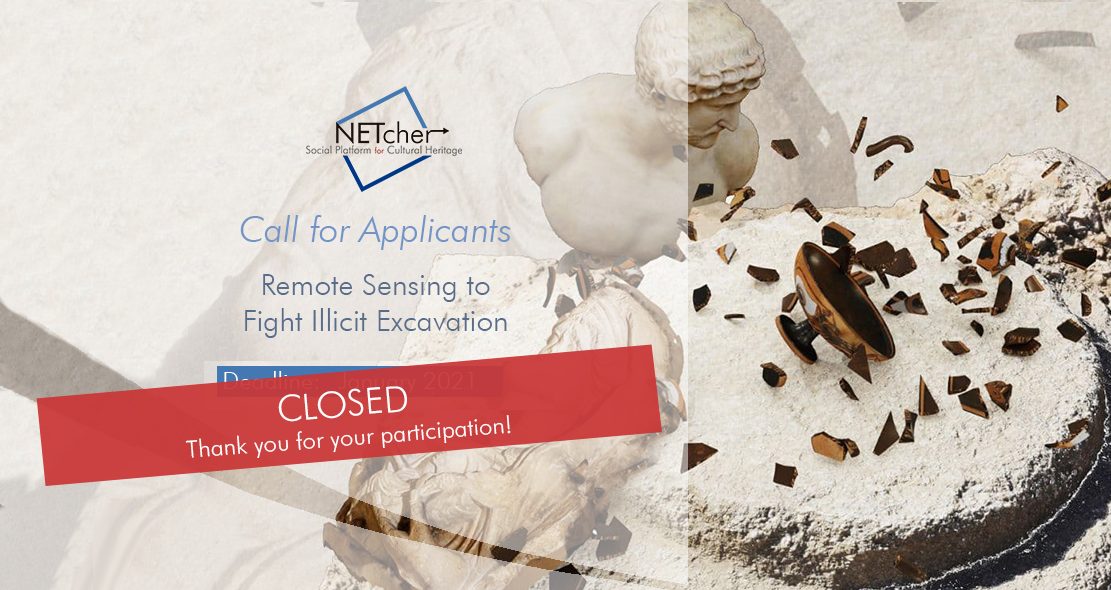(19-22 January 2021, Online)
On January 19th-22nd, 2021, Ca’ Foscari University of Venice (Italy) and the Center for Cultural Heritage Technology – Italian Institute of Technology (Italy) will organize the Remote Sensing to fight illicit excavation Training, in the framework of H2020 NETCHER Project.
NETCHER Remote Sensing to fight illicit excavation Training (NRST) is a 4-day online education programme aimed at training Cultural Heritage professionals in the use of Remote Sensing to identify evidence of archaeological sites’ looting.
The training programme is broken into two levels: a beginner level (days 1 and 2), comprising an introduction to remote sensing and image interpretation, and an advanced level (days 3 and 4), covering a detailed comparative overview of optical and radar satellite remote sensing state-of-the-art technologies, and an introduction to methods for identification and semi-automated detection of looting and landscape disturbance.
NRST addresses a broad audience of Cultural Heritage specialists, from independent professionals to officers of Museums, Art/Archaeology Superintendences officers, Cultural Heritage parks managers, and Cultural Heritage national agencies. Depending on their expertise, trainees can either attend both the training levels or only one of them.
If you are a motivated Cultural Heritage specialist, do not miss the chance to apply to the Training Programme and directly benefit from it in your daily professional activities.
Details
Online Training Programme
- 19-22 January 2021
- Full description and application information here
- Full programme here
- NRST will be open to maximum 25 participants. Please note, this course is very time-intensive and we ask a full commitment of the participants during the sessions.
- Fluency in English is required.
- No fees: the training costs are covered by NETCHER H2020 Project Training Fund.
- Priority is given to applicants from Museums, Institutions, and Superintendences working in geographic areas severely exposed to Cultural Heritage looting.

